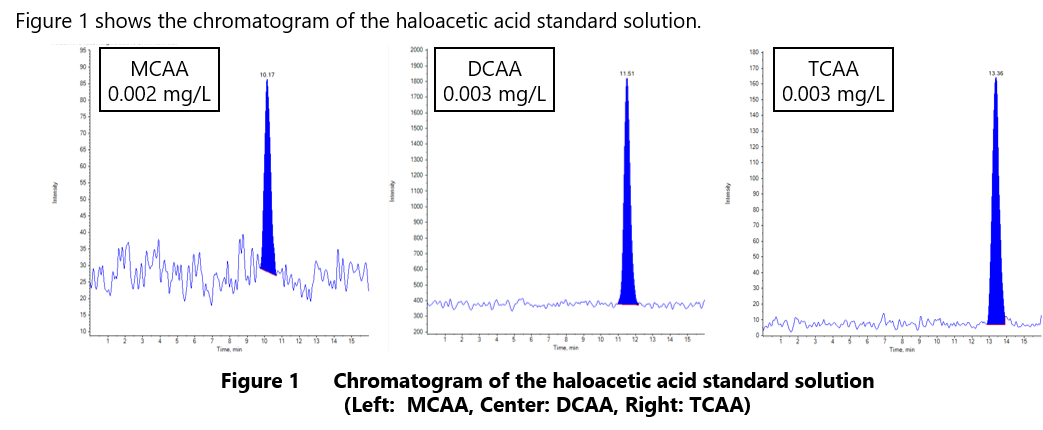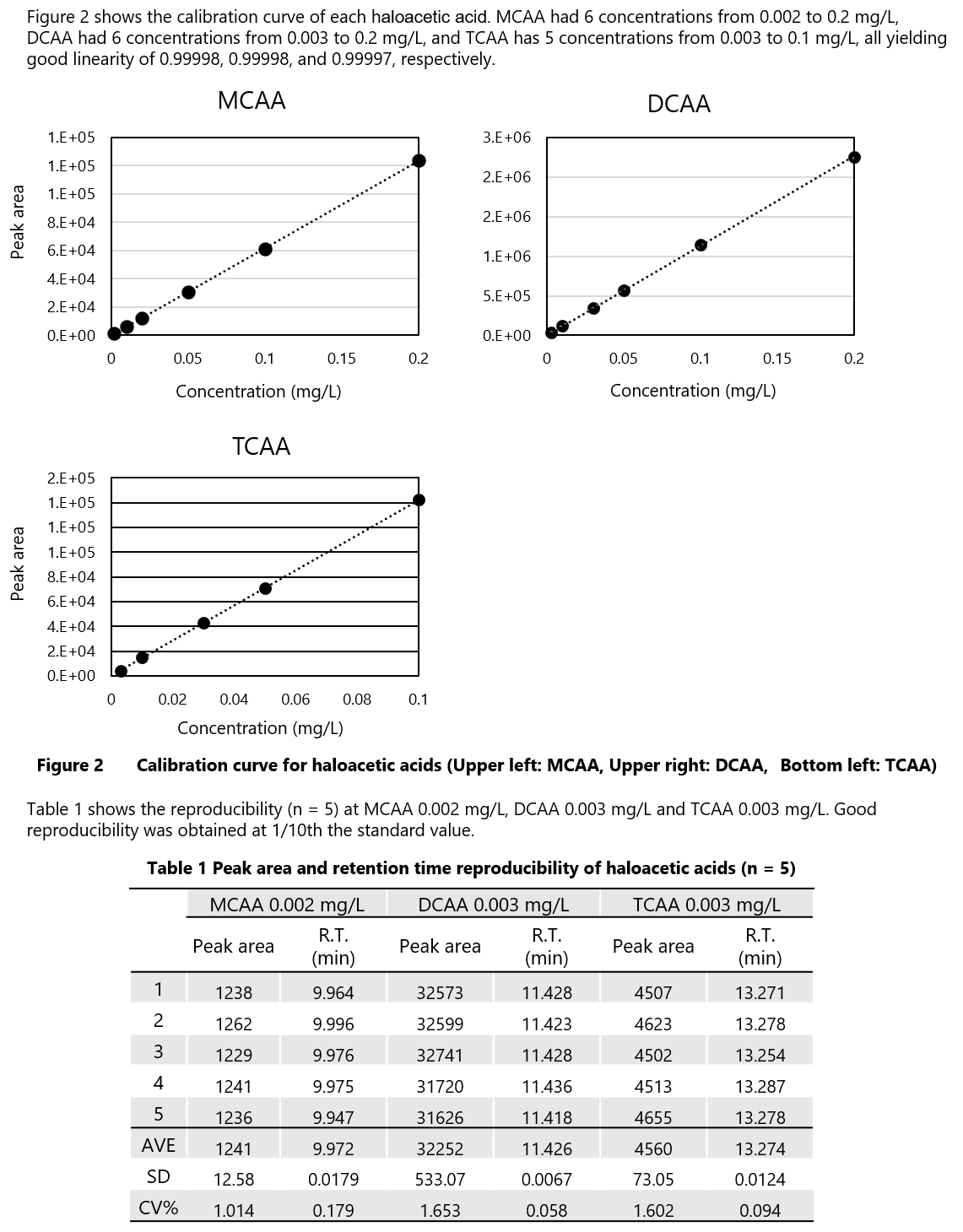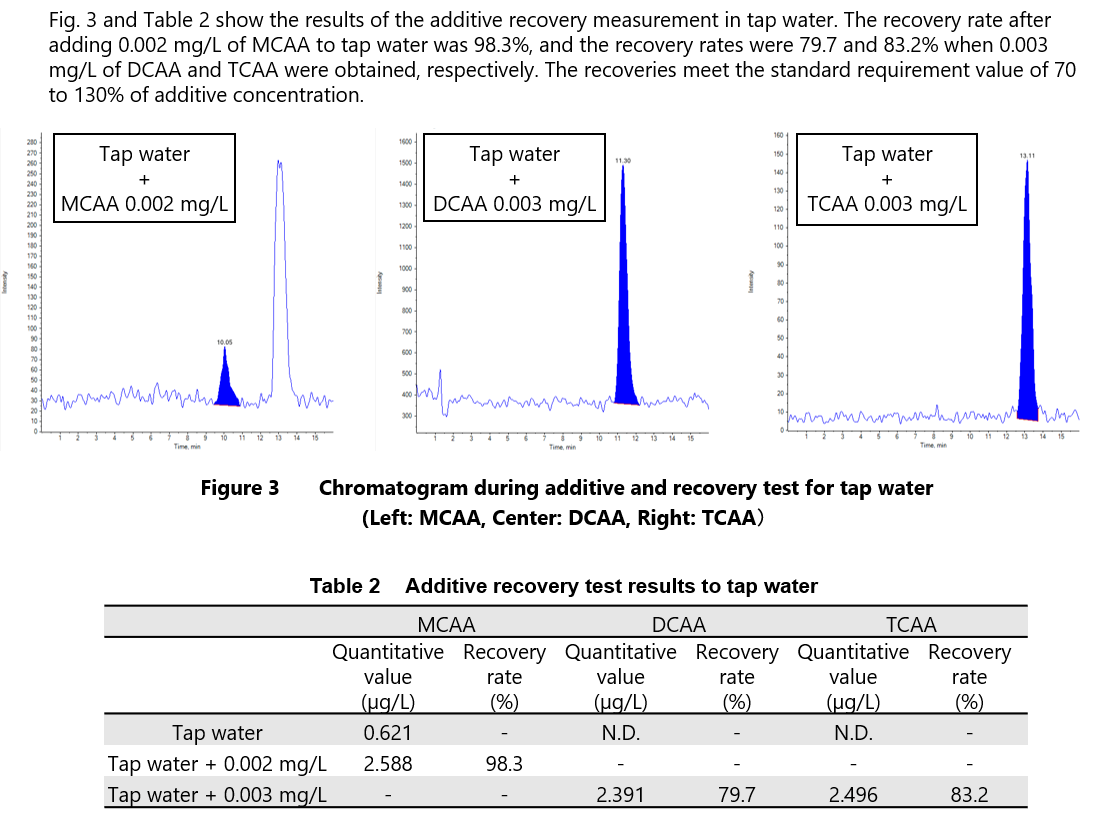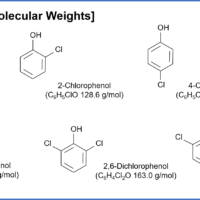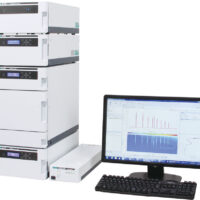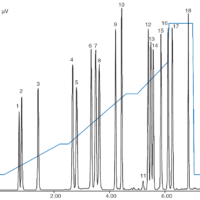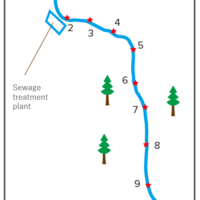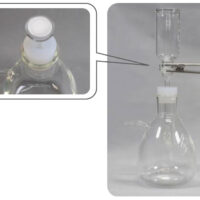Introduction
Haloacetic acids are disinfectant by-products generated from the reaction of organic substances, bromine and disinfectants in raw water during the water purification process. They are one of the important water quality standards of the Water Supply Act (Ministry of Health, Labour and Welfare No. 101 on May 30, 2003). Until now, haloacetic acids have been analyzed by a solvent extraction-derivatization-gas chromatography-mass spectrometer simultaneous analysis. In April 2012, a part of the inspection method of the Water Supply Act was revised, and the simultaneous analysis method using liquid chromatograph-mass spectrometer was newly adopted. The standard values in the notification method in 2012 were 0.02 mg/L for monochloroacetic acid (MCAA), 0.04 mg/L for dichloroacetic acid (DCAA), and 0.2 mg/L for trichloroacetic acid (TCAA). However, in April 2015, the standard values were strengthened with dichloroacetic acid revised to 0.03 mg/L and trichloroacetic acid revised to 0.03 mg/L. The SCIEX triple quadrupole mass spectrometer Triple QuadTM 3500 was used as a detector, and it was able to measure to 1/10th the standard value concentration (MCAA: 0.002 mg/L, DCAA: 0.003 mg/L, TCAA: 0.003 mg/L). As a result of using Shodex RSpak JJ-50 2D, which is a mixed-mode column, 1 cycle is less than 16 minutes. In addition, we also conducted an additive recovery test for tap water, which is reported below.
Experimental

Keywords
Haloacetic acid, Water quality standards, LC-4000, Triple QuadTM 3500, LC/MS/MS, RSpak JJ-50 2D
Results
